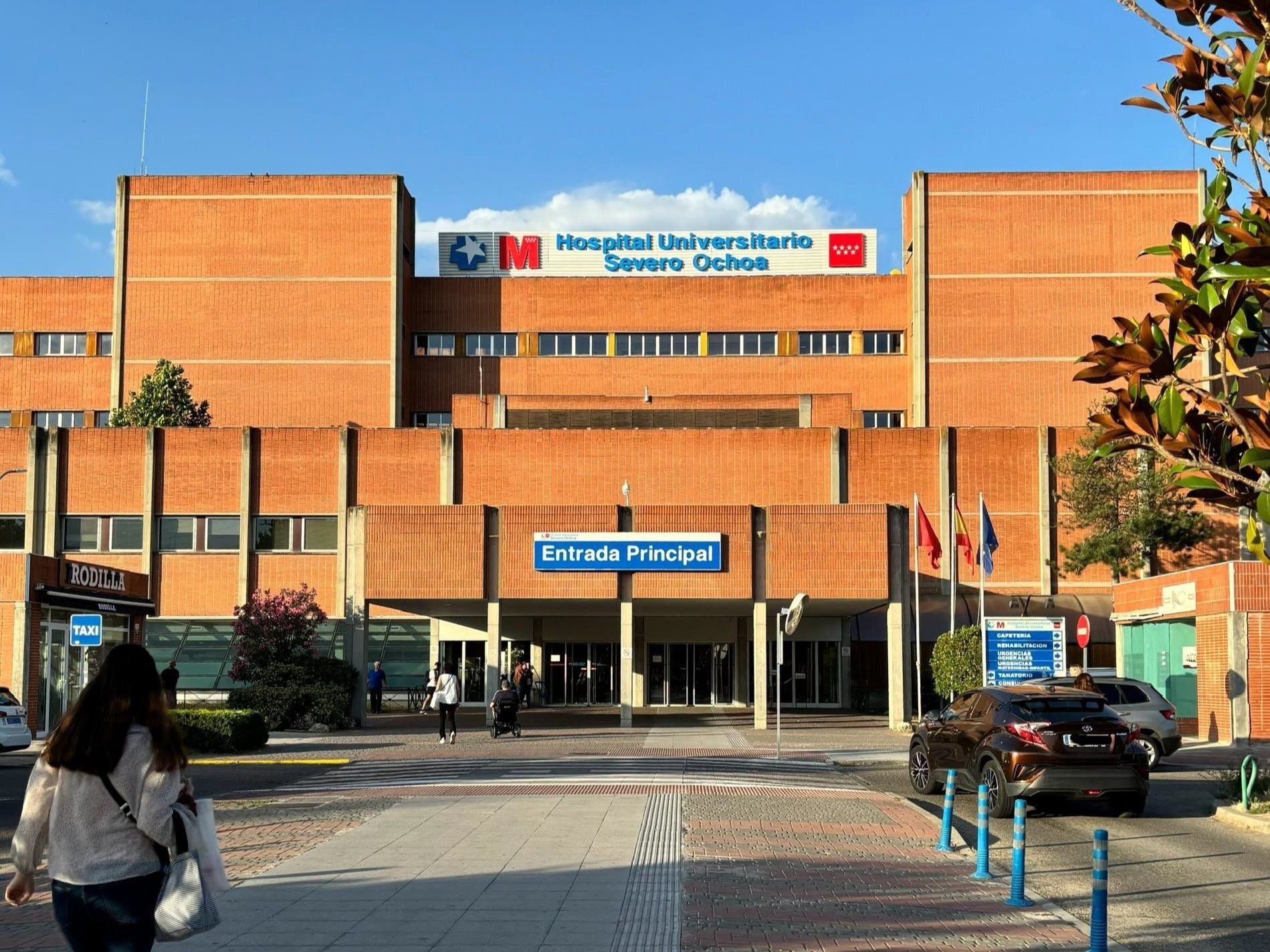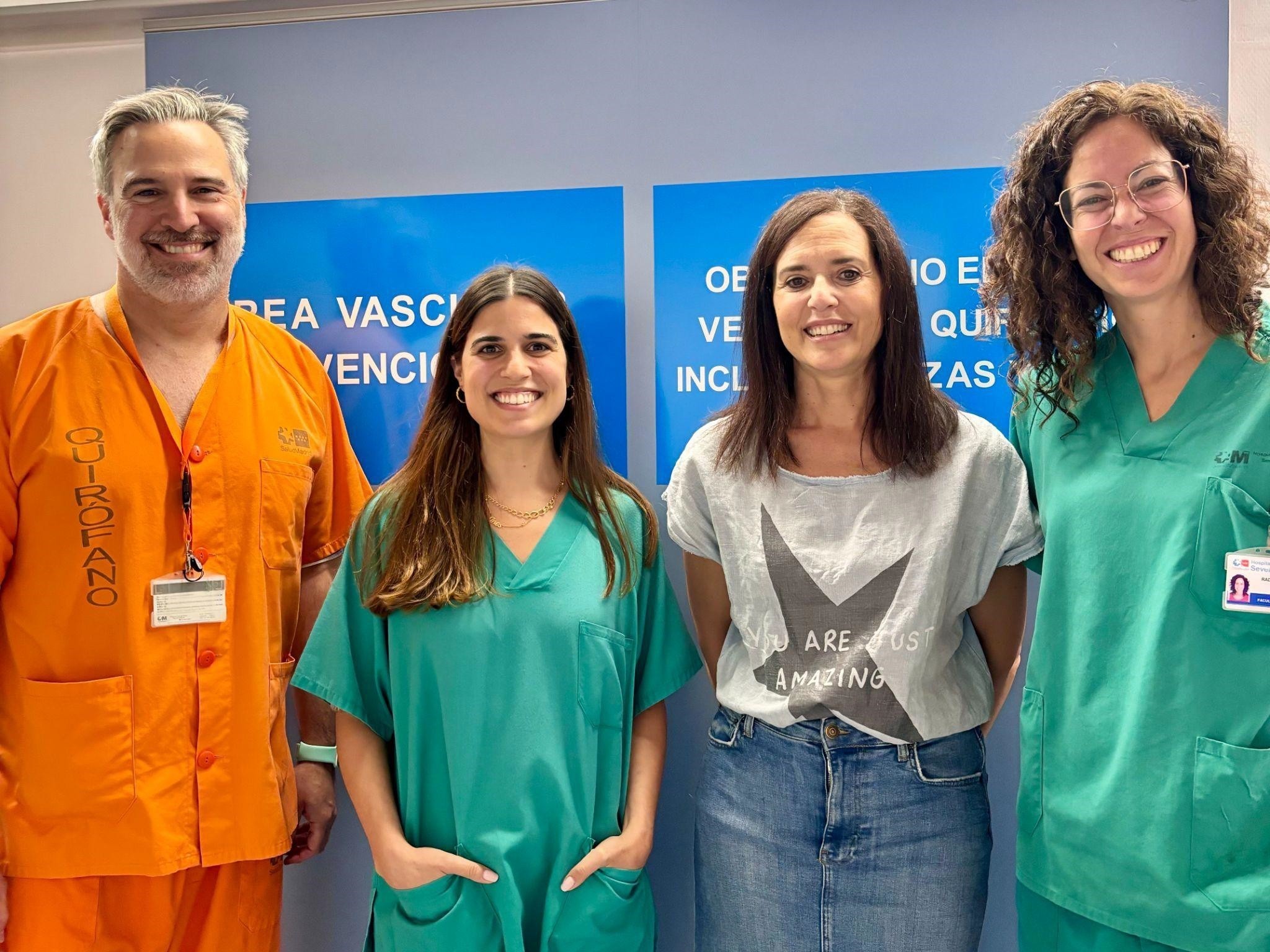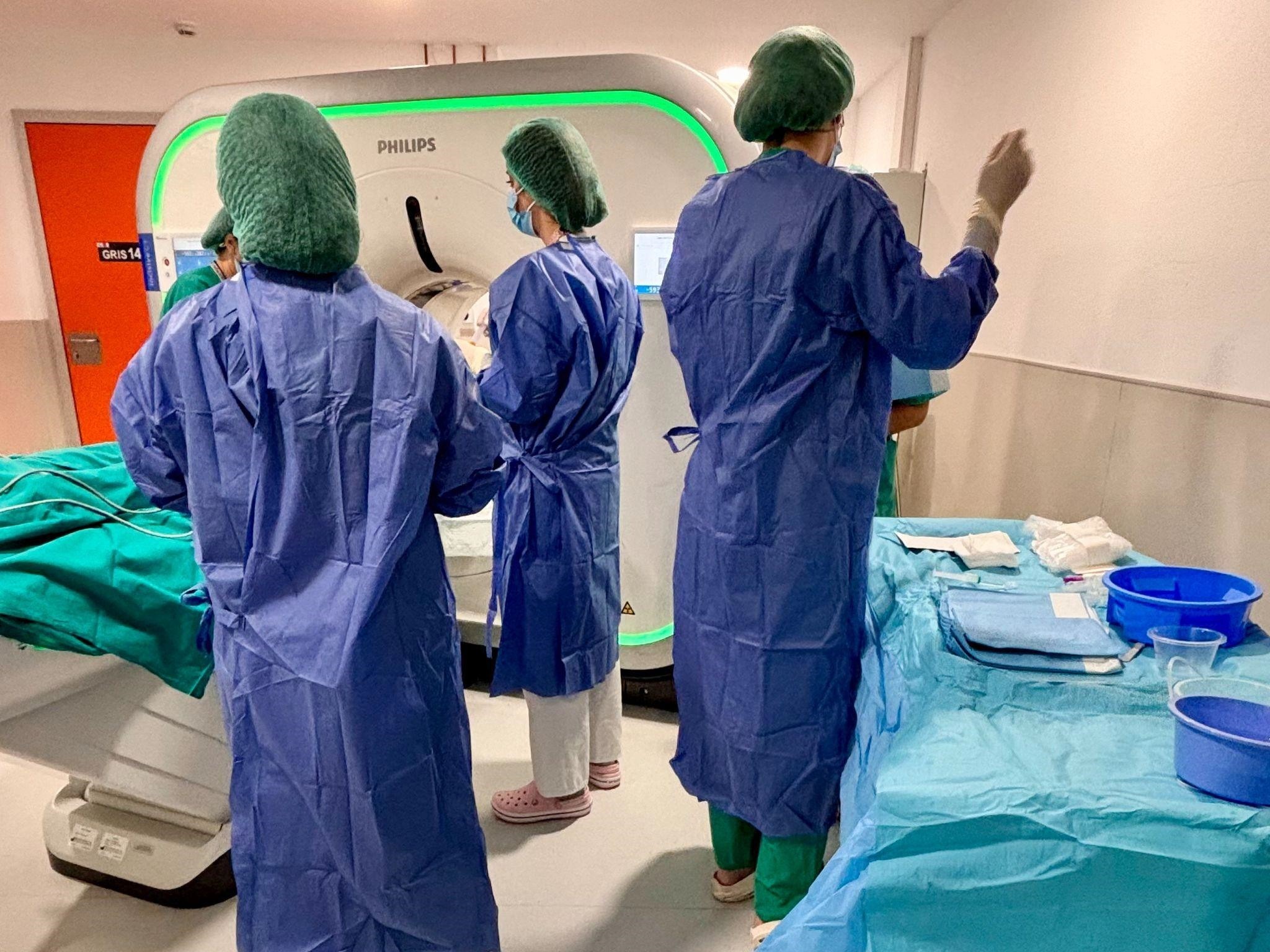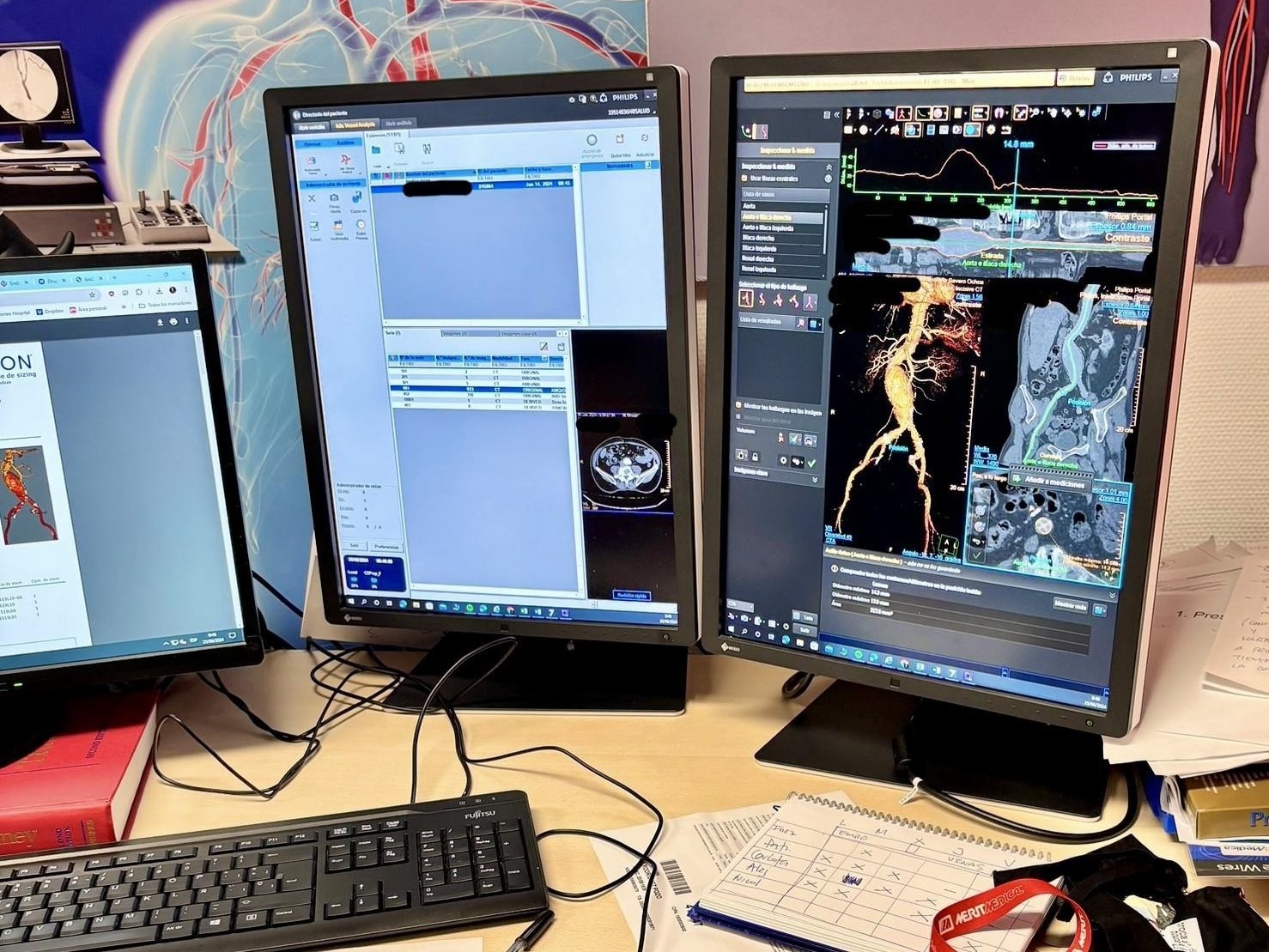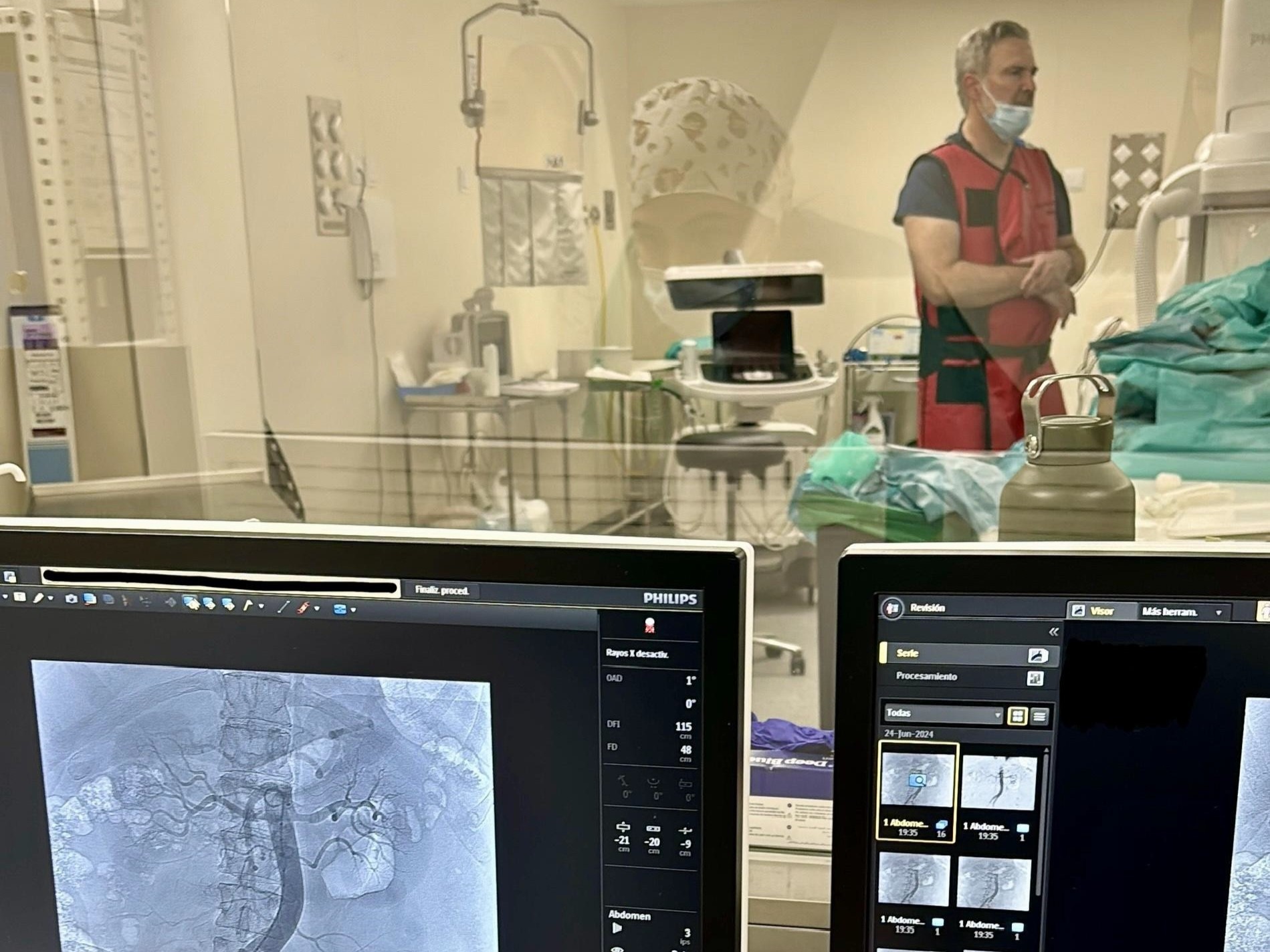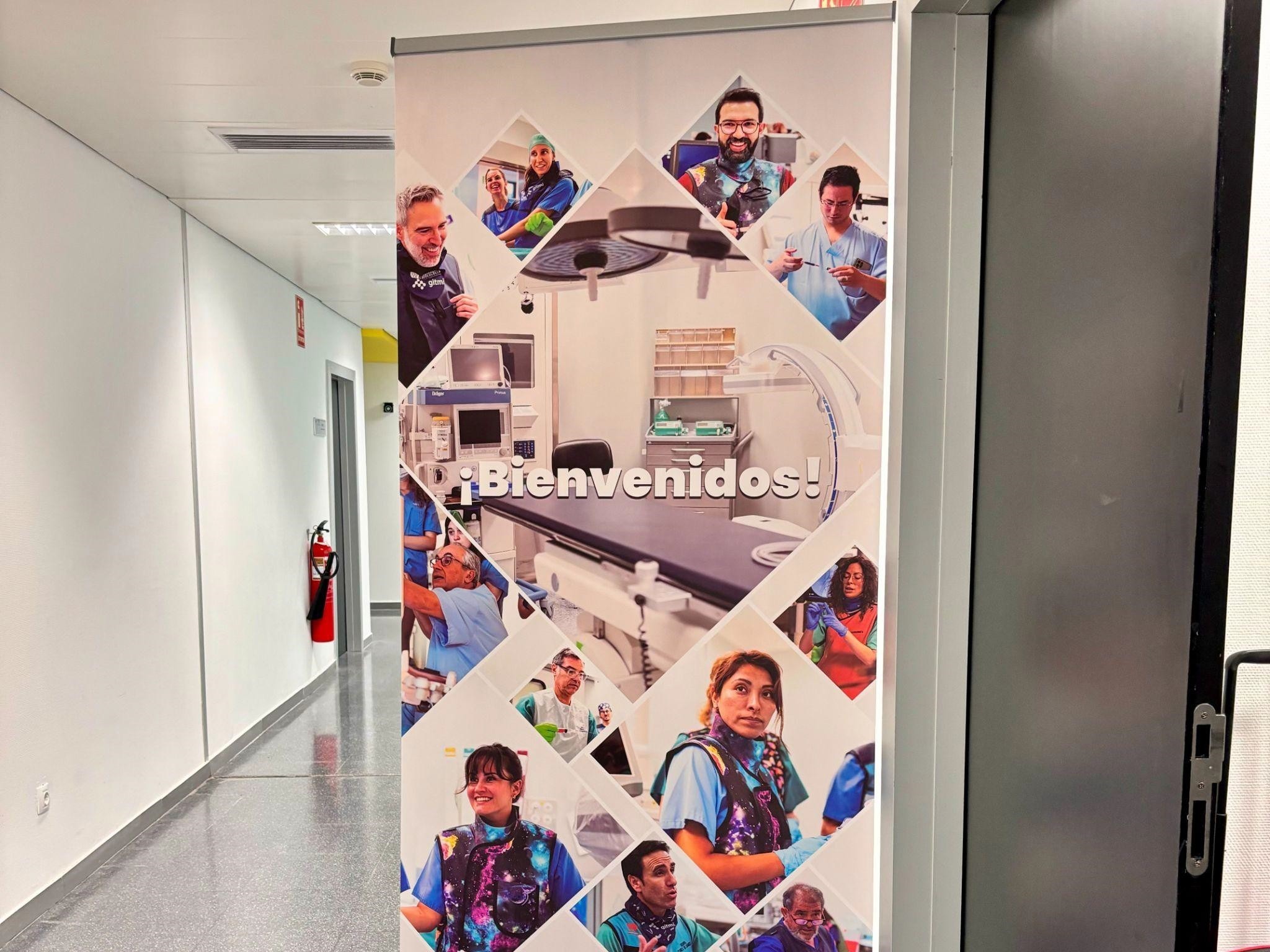By Dr. Inês Conde Vasco
I am an interventional radiology resident at the end of my residency at the Curry Cabral Hospital in Lisbon, Portugal. Curry Cabral is a reference centre for hepatobiliary and pancreatic diseases and liver transplantation, so I have had the privilege of gaining most of my experience in that area. What I was looking for in this fellowship was to gain exposure to other areas of vascular and non-vascular interventions.
With this in mind, the IR department of the Hospital Universitário Severo Ochoa in Madrid, headed by Professor Abadal, was the department I chose to complement my training. The medical team is composed of three interventional radiologists (Professor Dr. Jose Maria Abadal, Dr. Esther Galvez, and Dr. Maria Jesus Alvarez), who are highly dedicated to the interventional field and possess a very refined clinical sense. They were always didactic with the residents, before, during, and after the procedures. Despite its peripheral location within the Madrid area, the hospital treats a considerable number of patients on a daily basis. In addition to performing the procedures, the tasks included preparing reports on the procedures, ordering follow-ups and consultations, and also discharging patients.

